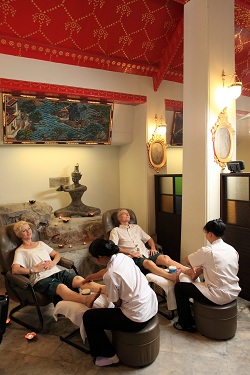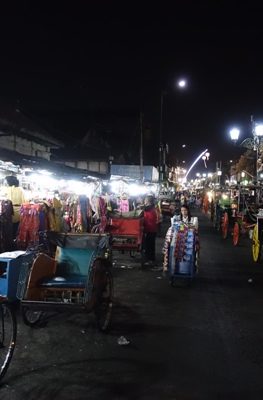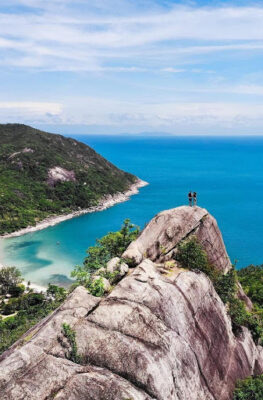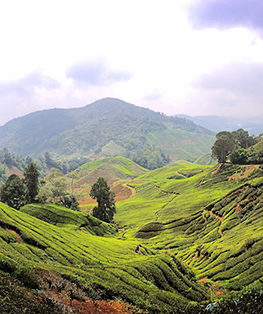Published on December 17, 2013

Visiting a Buddhist temple (called a “wat” in Thai) can be a fascinating part of a traveler’s cultural experience in Thailand. Visitors are welcome at any wat as long as they are respectful and conservatively dressed. In addition to being places of worship, Thailand’s wats serve as community and learning centers. One wat where travelers can not only get closer to heaven, but also leave feeling heavenly thanks to a soothing Thai massage, is Wat Pho, home of Thailand’s oldest traditional massage school.
Located in the heart of Bangkok in the Phra Nakhon district, next to the Grand Palace, Wat Pho is one of Thailand’s largest and oldest wats. Renowned for its magnificent 46-metre long Reclining Buddha, Wat Pho was also the location of Thailand’s first public university hundreds of years ago. Wat Pho is today Thailand’s leading center for learning ancient healing arts, especially traditional Thai medicine and Thai massage.
The Wat Pho Thai Traditional Massage School opened in 1962. Here, students learn the intricacies and rhythmic movements needed to provide a traditional Thai massage. The time-honoured techniques taught in the course are based on diagrams inscribed on 60 stone plaques mounted on nearby walls. These stones, placed during the reign of King Rama III in the mid 18th century, map out the human body’s therapeutic points and thousands of energy pathways known as “sen”. Students at the school learn how to use their hands, feet, knees and legs to manipulate these therapeutic points and sen to reduce muscle pain, relieve tension and stimulate blood circulation.

The massage school’s two open-air pavilions are on the east side of the Wat Pho grounds. Look for the buildings with the brightly-coloured roofs, identified by banners in Thai and English. Visitors can experience a Thai massage in two ways – by enjoying an affordable massage by one of the school’s advanced students, or by taking a course to learn the fine art of Thai massage themselves.
Enjoying a Thai Massage at Wat Pho
Even though the masseurs are students, they are very well-trained and highly practiced, so you can be assured of getting an authentic Thai traditional massage. You can book your massage session at the pavilion. There are 20 platforms available for body massage. Waiting time depends on how many people are queued up ahead of you. It’s best to visit early in the morning for the shortest wait.
Before your massage, you are given a comfortable pair of loose-fitting fisherman pants to wear. An attendant leads you to a massage platform in the pavilion. You lay on a firm mattress covered with a fresh sheet and pillow case. The simple and functional communal space has no partitions between the massage platforms, so you may feel a little self-conscious at first about the stranger getting a massage right next to you. The yellow-shirted masseurs start out by asking if there is any health problem or part of your body that needs particular attention. Then, with some gentle yet firm motions, your traditional Thai massage begins.
Traditional Thai massage involves a lot of hard pressing and stretching to reach your body’s deep tissue, so some of the techniques may feel a bit strenuous for first-timers. Your masseur knows exactly what muscles to work for the best effect. Once you loosen up, you can soak up the calming atmosphere; the humid tropical air cut by the cool breeze from the fan, the quiet conversations among the masseurs, and the faint sounds of the city beyond the walls. The massage itself will be focused and feel deeply intimate, even with many people around you. When your massage is over, you will be incredibly relaxed and rejuvenated. Only in Thailand can you have an invigorating and heavenly experience such as this.
A traditional Thai massage at Wat Pho costs 260 Baht for 30 minutes or 420 Baht for a full hour. A dry herbal treatment costs an additional 100 Baht. For visitors who want to give their feet relief after exploring Bangkok, foot reflexology massages are also available at 420 Baht per hour. Tips are not included or expected, but are certainly appreciated.
Learning the Art of Thai Massage
For visitors interested in learning the ancient art of Thai massage, the school offers both basic and advanced courses. The 30-hour basic course, spread out over five days, teaches you how to give a Thai massage to relieve muscle fatigue and pain, reduce tension throughout the body, and restore flexibility. The foot massage course integrates the finer points of Chinese reflexology with relaxing massage techniques. Students learn how to improve the functions of various internal organs, increase blood circulation and stimulate the immune system to slow the aging process and promote long life.
The basic Thai massage course costs 9,500 Baht, while the foot massage course is 7,500 Baht. Both courses are conducted in English. After completing the basic Thai massage course, you are eligible to take advanced courses such as Thai medical massage therapy (60 hours), oil massage and aromatherapy (30 hours), or infant and child massage (21 hours). All teach you in-depth techniques to promote the further development of the mind, body, and spirit. The cost of advanced courses ranges from 6,000 to 14,000 Baht. To register for the courses, you’ll need to have one photocopy of your passport and three passport-size photographs of yourself.
Traditional massage is an integral part of life in Thailand. By making a Thai massage a highlight of your visit to Thailand, you will have a memorable Thai experience while recharging yourself to fully enjoy the rest of your stay in the Kingdom.
Location:
2 Sanamchai Road, Phra Borommaharachawang, Phra Nakhon, Bangkok 10020 (Immediately south of the Grand Palace)
Getting There:
By Taxi: Ask the driver to take you to Wat Pho (or Wat Phra Chetuphon as it is known to most Thais)
By Boat: Take the Chao Phraya River Express to Tha Thien, then walk 5 minutes to Wat Pho.
By MRT: The closest station is Hua Lampong; take a taxi from there.
By Bus (Non-air conditioned): 1, 3, 6, 9, 12, 25, 32, 43, 44, 47, 51, 53, 82, and 103.
By Bus (Air-conditioned): 1, 6, 7, 8, 12, and 44.
Entrance:
You can enter Wat Pho from Chetuphon Road or Thai Wang Road
Hours of Operation:
Open every day from 8:00 – 17:30 hrs.
Admission:
100 Baht to enter the Wat Pho compound
Dress Code:
You should dress appropriately for a temple. Women who arrived in shorts or tank tops will be given a cloth to cover body parts.
Contact:
Wat Po Thai Traditional Medical School
Tel: +662-221-3686, +662-622-3551
e-mail: watpo.ttm@gmail.com






